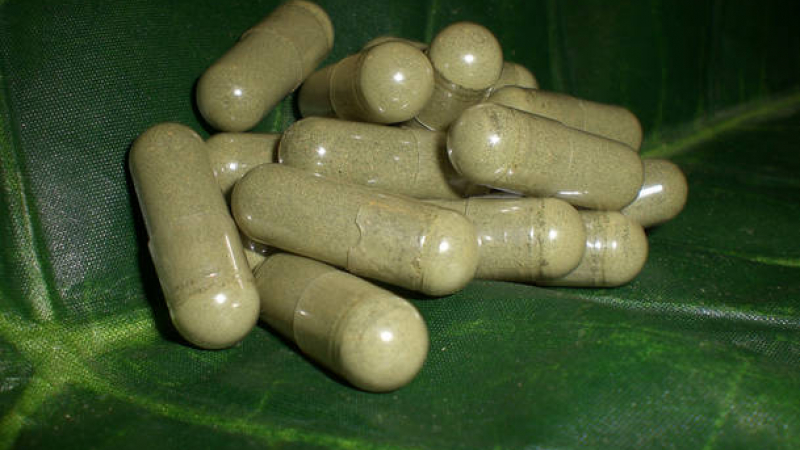
On August 30th, the Drug Enforcement Administration (DEA) revealed its plan to classify Kratom as a Schedule I drug. The Administration’s emergency action to place the drug in the same category as heroin, marijuana and cocaine, is being done in order to “avoid an imminent hazard to public safety”. Specifically, the two active chemicals in Kratom, mitragynine and 7-hydroxymitragynine, are being banned.
What Is Kratom?
A vast majority of Americans have never heard of this drug before the DEA’s declaration of intent. So what is it, and why is it considered to be a hazard to public safety?
Kratom is an herbal supplement, derived from the leaves of the tropical tree, Mitragyna speciosa, indigenous to Southeast Asia. It has been used by natives for hundreds of years as both a painkiller and stimulant. After it began appearing in the west in the beginning of the 21st century, users took it for one of two reasons; to either wean themselves off of more potent opioid-based drugs such as OxyContin, or as a recreational drug, that produced opioid-like effects.
In our country today, Kratom’s availability and promotion is similar to that of synthetic marijuana and bath salts. Often times, the drug is sold as a “dietary or herbal supplement” in coffee shops, paraphernalia stores (head shops), and online vendors. Due to the easy accessibility and notion that the drug is safe because it is legal, Kratom is widely bought and used by minors and young adults.
While Kratom can be bought in the form of a leaf or leaves, primarily in this country it is purchased in capsules filled with a powdery material, a liquid form, or chopped leaves meant to smoke or brew as tea. In lower doses of the chemical, it can simply heighten alertness and energy. However, the more Kratom a user ingests, the high is similar to that of opioids, giving off a pain relieving effect. Furthermore, the more a person a uses Kratom, the higher the risk of addiction, withdrawal and adverse side effects.
Is Kratom Really That Dangerous?
Kratom is still fairly new to our country, subsequently, so is the research and data on the chemical. The number of emergency room visits are comparatively low to those of heroin, prescription drugs and alcohol, giving advocacy groups ammunition for their lobbying strategies against Kratom’s ban.
Susan Ash, founder of the American Kratom Association, tells her story of Lyme disease and struggle with prescription painkillers. Ash, who was long prescribed strong opioids for her illness, says Kratom saved her life. When she could no longer afford her medications and wanted to stop taking Suboxone, she turned to Kratom to ease the pain. Ash says Kratom helped her “become a productive member of society” again. Many other stories such as this have surfaced since the DEA’s announcement.
So is it possible that Kratom is actually helpful rather than harmful? Here are some of the facts we would like you to consider. Because Kratom acts on opioid receptors in the brain and produces an opioid-like high, it can and has been abused. Due to abuse, dependence and addiction occur, along with withdrawal.
Withdrawal symptoms for Kratom mirror those of stronger acting opioids like heroin, Fentanyl and OxyContin and adverse side effects can be severe when taken in higher, prolonged doses. Based off of most current research and findings, said symptoms can include:
Adverse Side-Effects | Sweating, itching, delusions, lethargy, constipation, tremors, aggressive behavior, hallucinations, paranoia and psychotic behaviors.
Withdrawal Symptoms | Muscle and joint pain, diarrhea, muscle tremors and/or body jerking, depression, irritability, episodes of panic, restlessness and sleep disturbances, and mood swings.
While advocacy groups lobby to keep this “natural” substance legal for purchase, this is all too reminiscent of the origin of other opioid medications and the history of addiction issues in our country. Dating back to the 1800s, morphine was the drug of choice for many, both medicinally and recreationally. As the rate of addiction and death rose, the American government made heroin the legal and more suitable alternative to wean addicts off of morphine. We obviously know how that worked out.
Then came the birth of methadone, a medication used to help addicts comfortably withdraw from heroin, which was promoted as a less-addictive drug by comparison. By the 70s and fast-forwarding to the 90s, prescription medication, such as Vicodin, Percocet and OxyContin hit the market. Each of these substances were said to be the more suitable and less evasive option to major surgery, also being sold under the notion that they were not addictive.
Again, addiction and overdose rates rose, encouraging the push for opioid treatment medications such as Subutex and Suboxone; another opioid medication used to treat opioid addiction. Today, these medications are known to be very addictive and difficult to stop taking, without risking the possibility of a very uncomfortable withdrawal process.
It would appear that our country lives in a perpetual cycle of opioid addiction, and the number one source for treatment seems to always be the use of another opioid. While it may be a less potent form, it is addictive all the same. Implying that Kratom isn’t dangerous because it comes from a plant, would be saying the same for marijuana and heroin. The users, makers and advocacy groups of Kratom are arguing the same points big pharma said 20 years ago, when other medications were introduced. In ten years from now, do we really want to regret ever allowing for this drug to be legal?
Contact Clearbrook Today
Although Kratom is derived from a plant and the high associated with the drug is not as intense as that of heroin, it is still highly addictive. Along with potential addiction and withdrawal issues, Kratom poses severe side-effects that can be hazardous to both the individual and society.
If you or someone you love is struggling with an addiction, namely an opioid problem, know that there is another option. Maybe you were once prescribed an opioid medication and now take Kratom to ease the discomfort of going “cold turkey”. You should know that life is possible without the use of ANY mood or mind altering chemicals.
For over 40 years, Clearbrook Treatment Centers has been assisting those who are afflicted with the disease of addiction. If you need help with a Kratom, opiate or heroin addiction, contact our Admissions Specialists today. We can offer you abstinence-based recovery, free of the mental obsession. Are you ready to start your journey to recovery? Give us a call, we will be happy to help.







